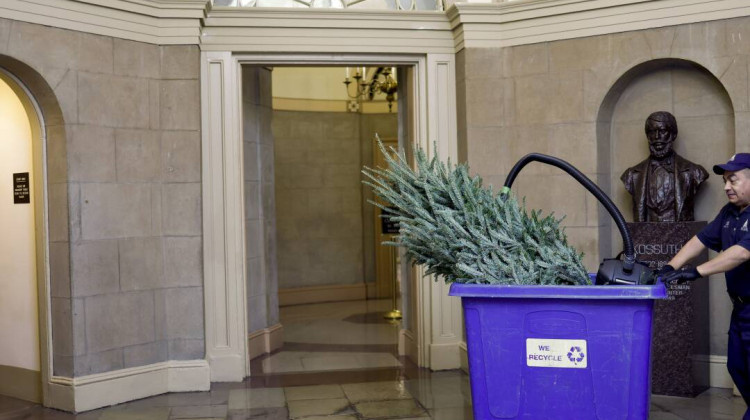
The removal of a 75-foot ash tree due to an ash borer infestation is a sign of things to come.
U.S. Department of Agriculture (flickr)Greenfield’s largest city park’s ash tree population is in big trouble. The city recently removed a 75-foot ash tree from the park due to an emerald ash borer infestation, and more trees are likely to follow.
The invasive emerald ash borer—a green beetle native to Asia—first showed up in Michigan around 2002. Since then it’s made its way into Indiana, decimating ash tree populations in the northeastern part of the state.
Greenfield City Naturalist Joe Whitfield says he’s been keeping an eye on the tree that came down last week, but when he noticed an emerald ash borer exit hole in its trunk earlier this year, he knew it’d only be a matter of time.
"We decided the best thing to do would be to just cut it down," says Whitfield. "When I cut it down, I got to looking at the rest of the trees--you know, couldn't see because it was so high up--and I stopped counting at twenty [bore holes]."
That’s twenty more trees Whitfield spotted with bore holes and undoubtedly more in Greenfield’s Riley Park. Whitfield estimates the park contains about 130 ash trees—about 70 to 80 percent of the park’s total tree population.
Indiana Department of Natural Resources Entomologist Phil Marshall says the dying ash in Greenfield indicate the beginning of what he calls the “killing wave” in and around Hancock County.
"They've been there for a while because it takes three to five years before we see any symptoms on the trees that are infested," Marshall says. "And it's usually about five to seven years after before the trees die."
Marshall says areas south of Hancock County will likely see signs of infestation within the next few years. He says homeowners should consider removing already infected ashes and replacing them with variety of other species.
 DONATE
DONATE







 Support WFYI. We can't do it without you.
Support WFYI. We can't do it without you.